Rare and Exotic Plant Troubleshooting Guide
Overview:
Caring for rare and exotic plants can be a rewarding but sometimes challenging endeavor. These unique plants often have specific care requirements that, if unmet, can lead to a range of issues. Whether you’re dealing with yellowing leaves, stunted growth, or pest infestations, this Rare and Exotic Plant Troubleshooting Guide will help you identify problems and provide solutions to keep your plants healthy and thriving.
1. Yellowing Leaves
Symptoms:
Yellowing leaves are a common issue in many rare and exotic plants. This can occur for a variety of reasons, often signaling that something is wrong with the plant’s environment or care routine.
Common Causes:
- Overwatering: One of the most common causes of yellowing leaves is overwatering. When the roots sit in water for too long, they can begin to rot, leading to nutrient deficiencies and yellowing leaves.
- Underwatering: Conversely, underwatering can cause leaves to yellow as the plant struggles to sustain itself with insufficient moisture.
- Nutrient Deficiency: Lack of essential nutrients, particularly nitrogen, can cause the leaves to turn yellow.
- Poor Drainage: If the soil does not drain well, it can retain excess water, leading to root rot and yellowing leaves.
Solutions:
- Adjust Watering Routine: Ensure you are watering your plant appropriately. Allow the top inch or two of soil to dry out before watering again, depending on the plant species.
- Improve Drainage: Use a well-draining potting mix, and make sure your pot has drainage holes to prevent water from pooling at the bottom.
- Fertilize Regularly: Use a balanced fertilizer during the growing season to ensure your plant receives the necessary nutrients.
2. Brown Leaf Tips or Edges
Symptoms:
Brown tips or edges on leaves can be unsightly and are often a sign that the plant’s environment is not ideal. This issue is particularly common in tropical plants that are sensitive to their surroundings.
Common Causes:
- Low Humidity: Many rare and exotic plants, especially tropical varieties, require high humidity to thrive. Dry indoor air can cause the leaf tips to brown.
- Inconsistent Watering: Irregular watering, especially allowing the plant to dry out too much between waterings, can cause leaf edges to turn brown.
- Salt Buildup: Over time, salts from fertilizers can build up in the soil, causing the leaf tips to brown as the plant struggles to absorb water.
Solutions:
- Increase Humidity: Use a humidifier, mist the leaves regularly, or place the plant on a pebble tray with water to boost humidity levels.
- Water Consistently: Stick to a regular watering schedule that suits the specific needs of your plant. Avoid letting the soil dry out completely between waterings unless the plant prefers it.
- Flush the Soil: Periodically flush the soil with water to remove excess salts. Ensure the pot has good drainage to avoid waterlogging.
3. Drooping or Wilting Leaves
Symptoms:
Drooping or wilting leaves can be alarming and are often a sign that the plant is stressed. This issue can have several underlying causes.
Common Causes:
- Underwatering: When a plant doesn’t receive enough water, it can lose turgor pressure, causing the leaves to droop.
- Overwatering: Excessive watering can lead to root rot, which hinders the plant’s ability to absorb water, resulting in drooping leaves.
- Temperature Stress: Sudden changes in temperature, especially exposure to cold drafts or excessive heat, can cause the leaves to droop.
- Pest Infestation: Pests such as spider mites or aphids can sap the plant’s energy, leading to drooping leaves.
Solutions:
- Check Soil Moisture: Ensure the soil is appropriately moist. Water if it feels dry, but if it’s soggy, hold off and allow it to dry out a bit before watering again.
- Stabilize Temperature: Keep your plant in a stable environment away from drafts, heating vents, or direct sunlight.
- Inspect for Pests: Check the plant thoroughly for signs of pests and treat with insecticidal soap or neem oil if necessary.
4. Leggy Growth
Symptoms:
Leggy growth, where the plant becomes elongated with sparse leaves, is a sign that the plant is not receiving enough light. This issue is common in indoor settings where natural light might be insufficient.
Common Causes:
- Insufficient Light: The most common cause of leggy growth is inadequate light. The plant stretches towards the light source, leading to elongated stems and sparse foliage.
- Improper Pruning: Failure to prune or pinch back the plant can lead to leggy growth, especially in vining species.
Solutions:
- Increase Light Exposure: Move the plant closer to a light source or supplement with grow lights to provide adequate lighting.
- Prune Regularly: Prune leggy stems to encourage bushier growth. Regular pinching back can also help maintain a more compact shape.
- Rotate the Plant: Ensure all sides of the plant receive equal light exposure by rotating it regularly.
5. Stunted Growth
Symptoms:
Stunted growth, where the plant appears to be growing very slowly or not at all, can be frustrating for plant owners. This issue is often related to environmental factors or nutrient availability.
Common Causes:
- Nutrient Deficiency: Lack of essential nutrients, particularly nitrogen, phosphorus, and potassium, can slow down growth.
- Inadequate Light: Insufficient light can hinder the plant’s ability to photosynthesize effectively, leading to slow growth.
- Root Bound: If the plant has outgrown its pot and become root-bound, it may struggle to absorb water and nutrients, resulting in stunted growth.
- Pest Infestation: Pests feeding on the plant can sap its energy, leading to poor growth.
Solutions:
- Fertilize Appropriately: Use a balanced fertilizer during the growing season to ensure the plant receives the nutrients it needs to grow.
- Increase Light: Ensure the plant is receiving adequate light for its species. Move it to a brighter location if necessary.
- Repot if Needed: Check if the plant is root-bound by examining the roots. If they’re circling the pot or tightly packed, it’s time to repot into a larger container.
- Check for Pests: Inspect the plant for signs of pests and treat accordingly.
6. Pest Infestations
Symptoms:
Pests can cause a range of issues, from yellowing leaves and stunted growth to sticky residue and visible insects on the plant. Identifying and treating pest infestations early is crucial to preventing damage.
Common Pests:
- Spider Mites: Tiny, spider-like creatures that leave fine webbing on the plant.
- Aphids: Small, soft-bodied insects that cluster on new growth and secrete a sticky substance called honeydew.
- Mealybugs: White, cotton-like pests that hide in leaf joints and on the underside of leaves.
- Scale Insects: Small, flat, oval insects that attach themselves to stems and leaves, often resembling small bumps.
Solutions:
- Isolate the Affected Plant: To prevent pests from spreading, move the infested plant away from other plants.
- Treat with Insecticidal Soap or Neem Oil: Spray the plant with insecticidal soap or neem oil, following the manufacturer’s instructions.
- Wipe Down Leaves: For larger pests like mealybugs and scale, use a cotton swab dipped in rubbing alcohol to remove them manually.
- Maintain Plant Health: Healthy plants are less susceptible to pests. Ensure your plant receives proper care, including adequate light, water, and nutrients.
7. Root Rot
Symptoms:
Root rot is a serious issue caused by overwatering or poor drainage, leading to mushy, discolored roots and a decaying smell. Affected plants may exhibit yellowing leaves, wilting, or stunted growth.
Common Causes:
- Overwatering: Excessive watering, especially in poorly draining soil, can lead to root rot.
- Poor Drainage: Pots without drainage holes or compacted soil can trap water around the roots, causing them to rot.
Solutions:
- Reduce Watering: Adjust your watering schedule to allow the soil to dry out between waterings. Always check the soil moisture before watering.
- Improve Drainage: Ensure your plant is in a well-draining potting mix and that the pot has drainage holes.
- Repot the Plant: If root rot is detected, remove the plant from its pot, trim away the affected roots, and repot it in fresh, well-draining soil. Consider using a fungicide to treat the remaining healthy roots.
8. Leaf Drop
Symptoms:
Leaf drop can be a natural process for some plants, but excessive leaf drop often indicates stress or environmental issues.
Common Causes:
- Temperature Fluctuations: Sudden changes in temperature, such as exposure to drafts or cold air, can cause leaves to drop.
- Overwatering or Underwatering: Both too much and too little water can lead to leaf drop.
- Pest Infestation: Pests feeding on the plant can weaken it, leading to leaf drop.
Solutions:
- Stabilize Temperature: Keep your plant in a stable environment away from drafts, air conditioning vents, or heat sources.
- **Adjust Water



 All Plants
All Plants Alocasias
Alocasias Anthuriums
Anthuriums Monstera
Monstera Philodendrons
Philodendrons Rare & Exotic Plants
Rare & Exotic Plants Succulents & Cacti
Succulents & Cacti Beginner
Beginner Intermediate
Intermediate Expert
Expert Low Light
Low Light Bright Indirect
Bright Indirect Direct Sun
Direct Sun New Arrivals
New Arrivals Best Sellers
Best Sellers On Sale
On Sale




